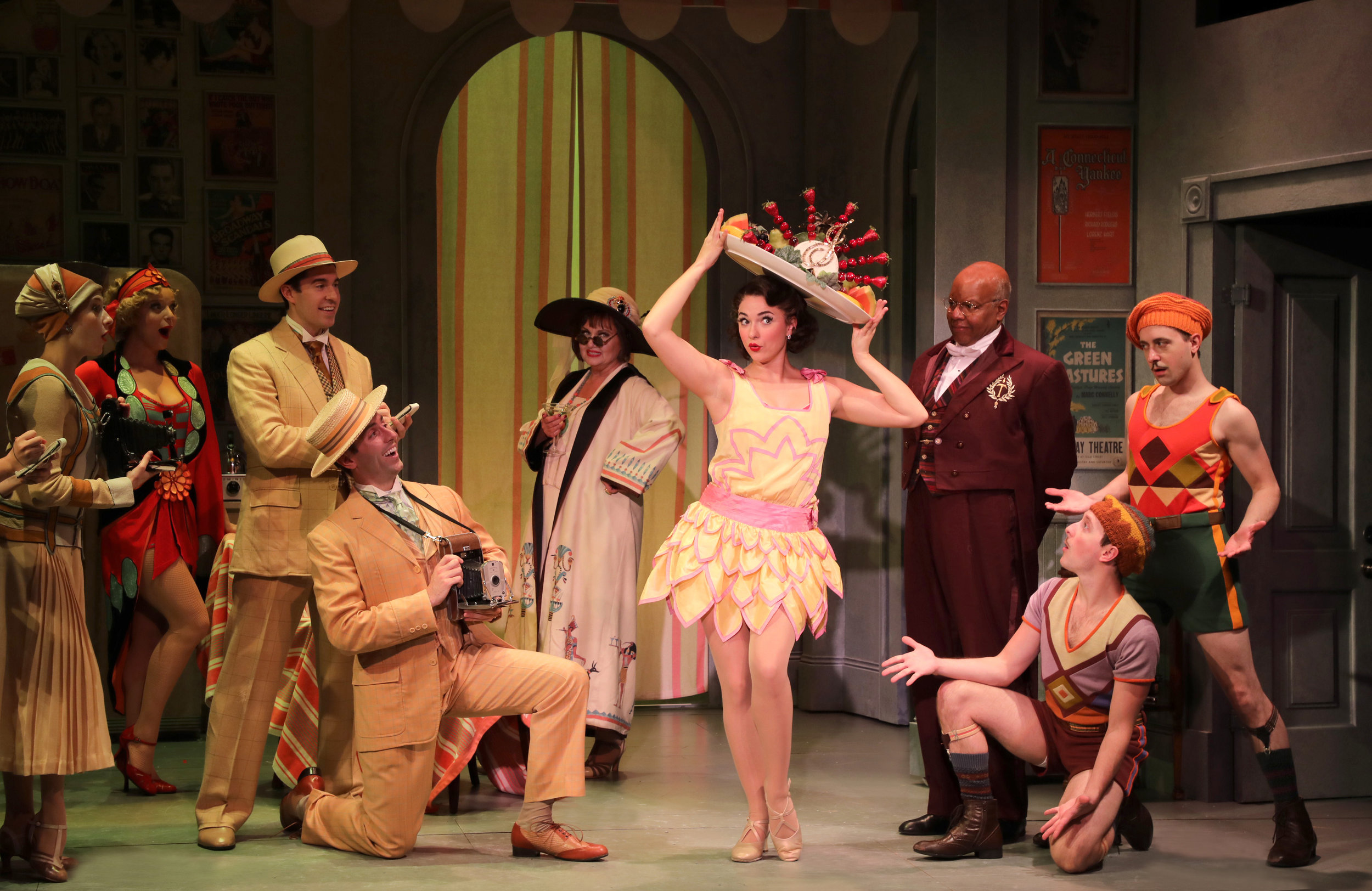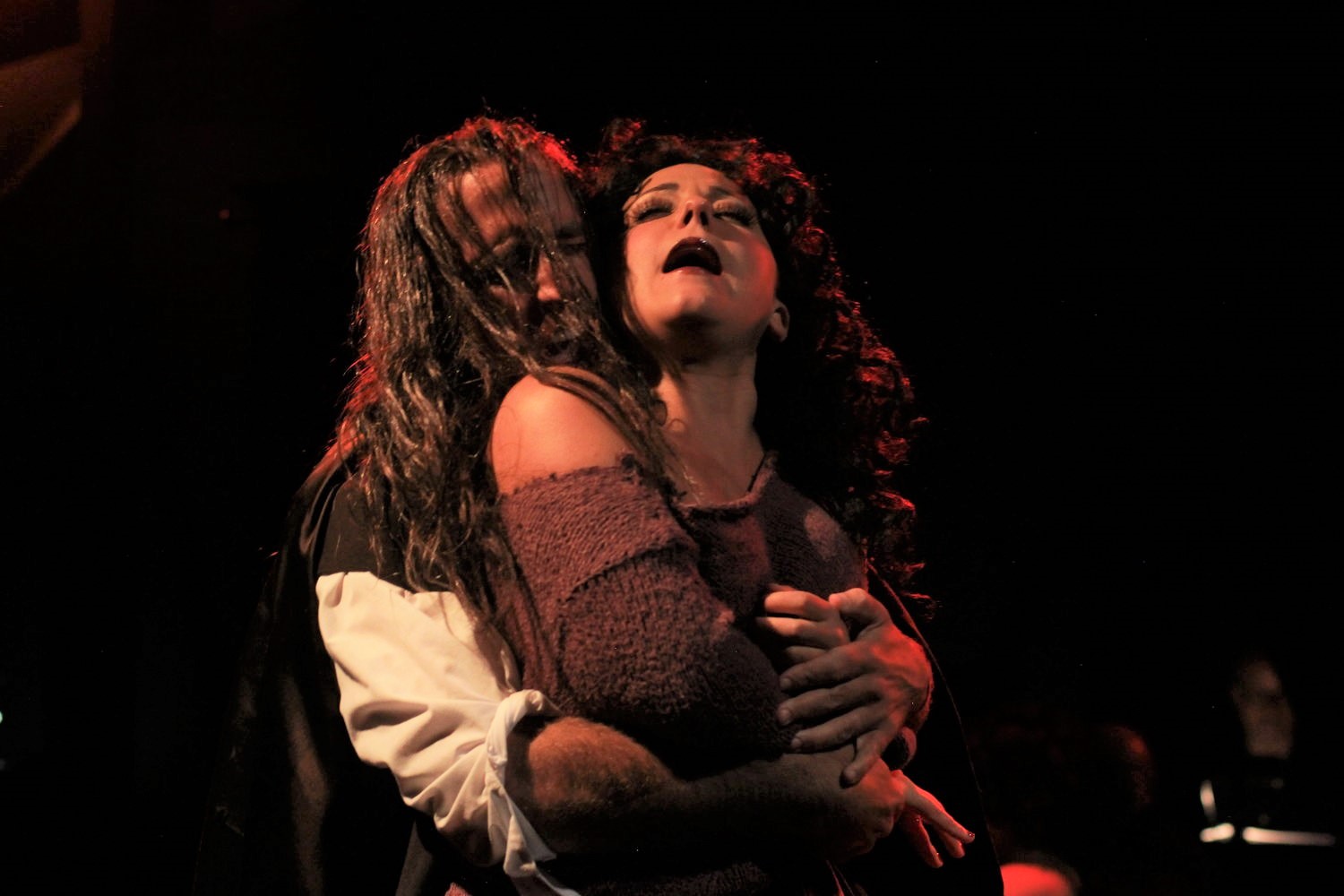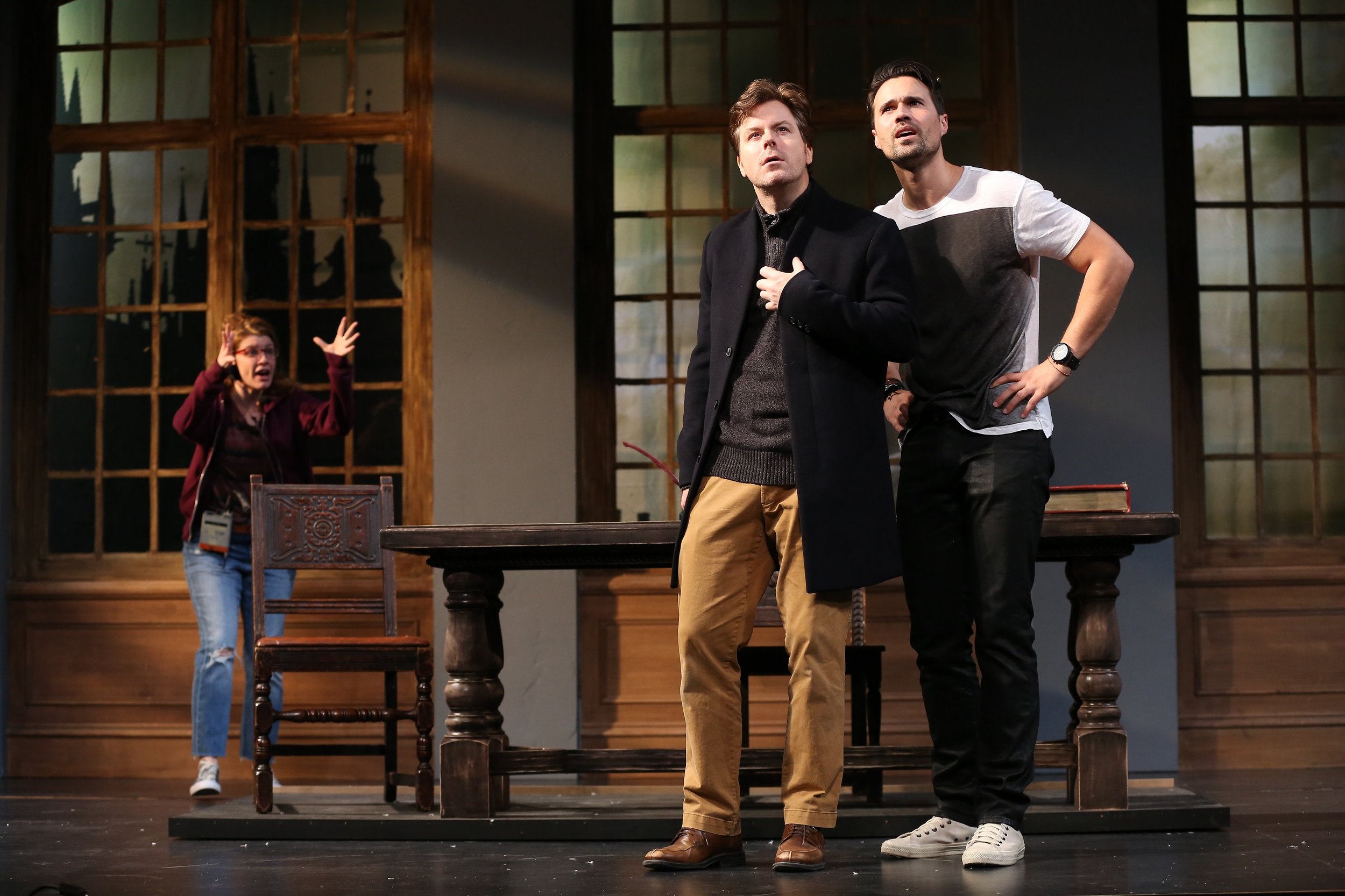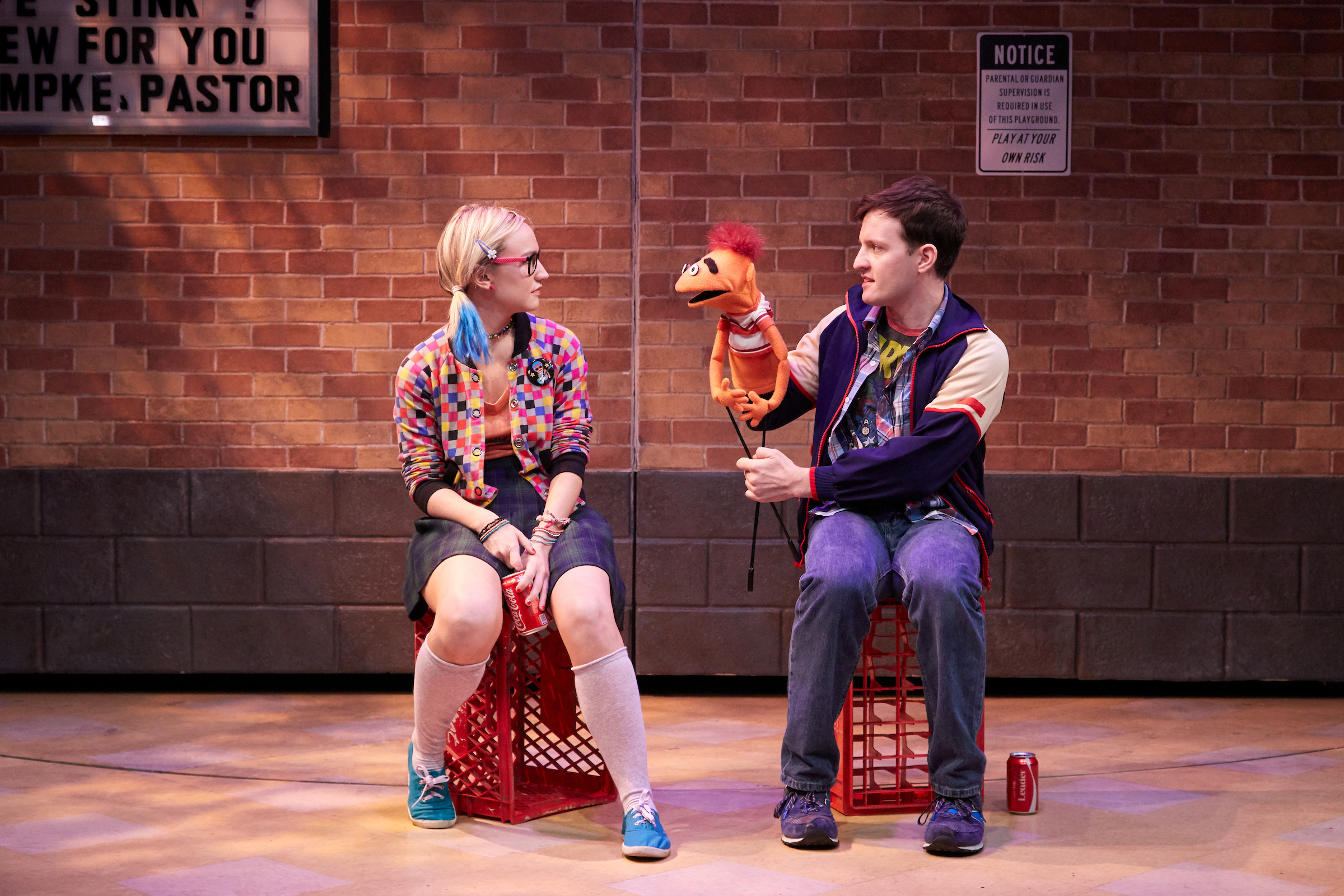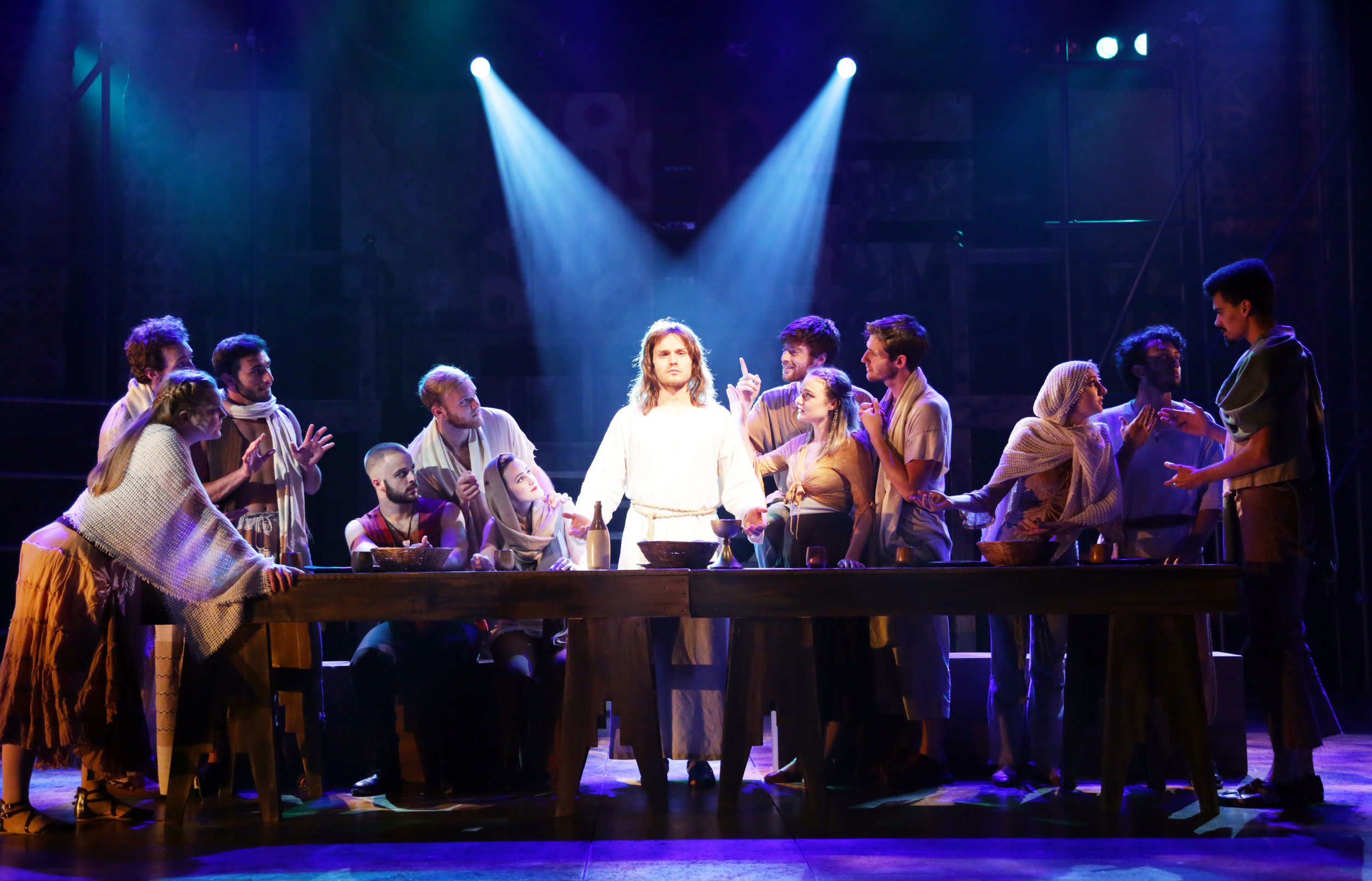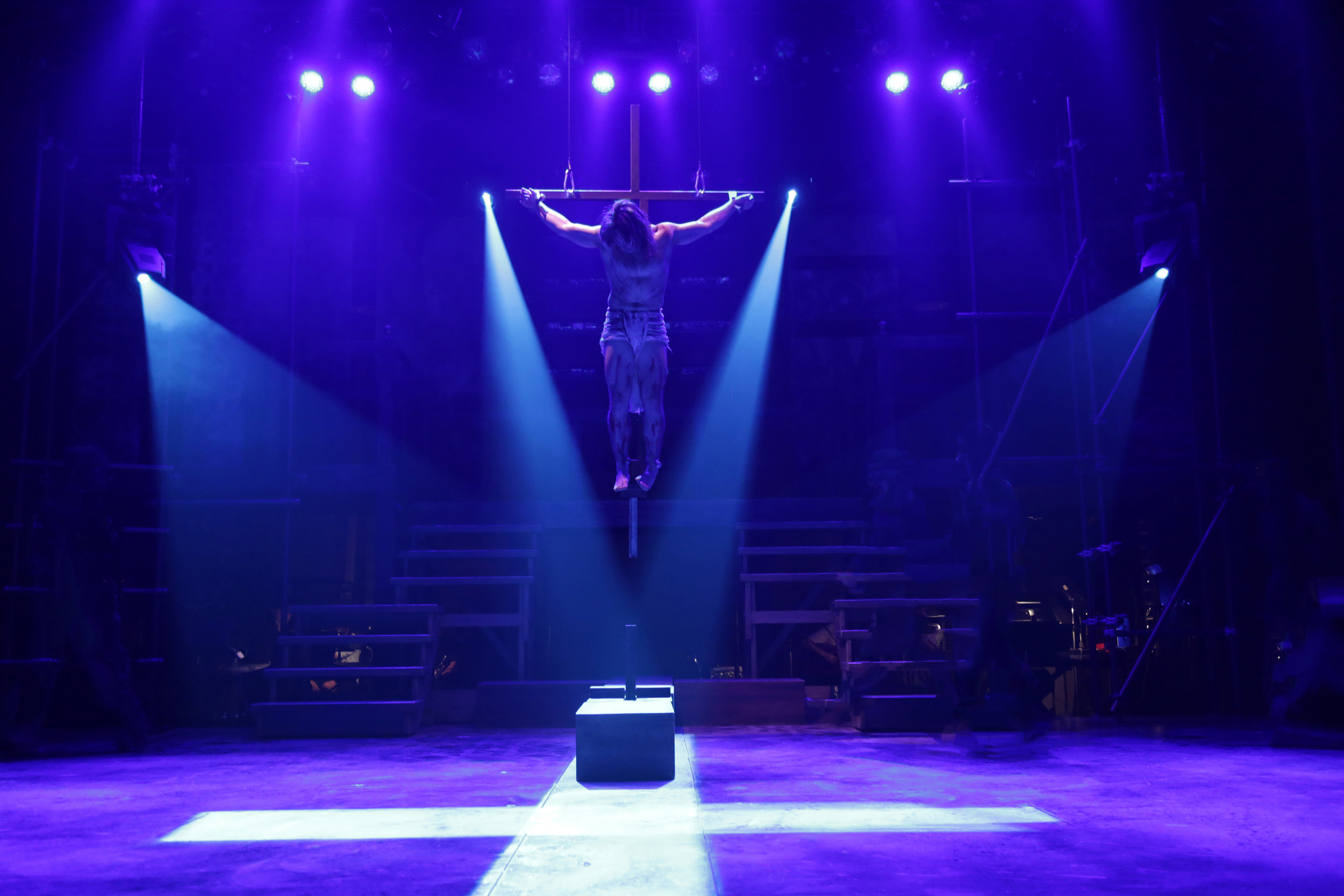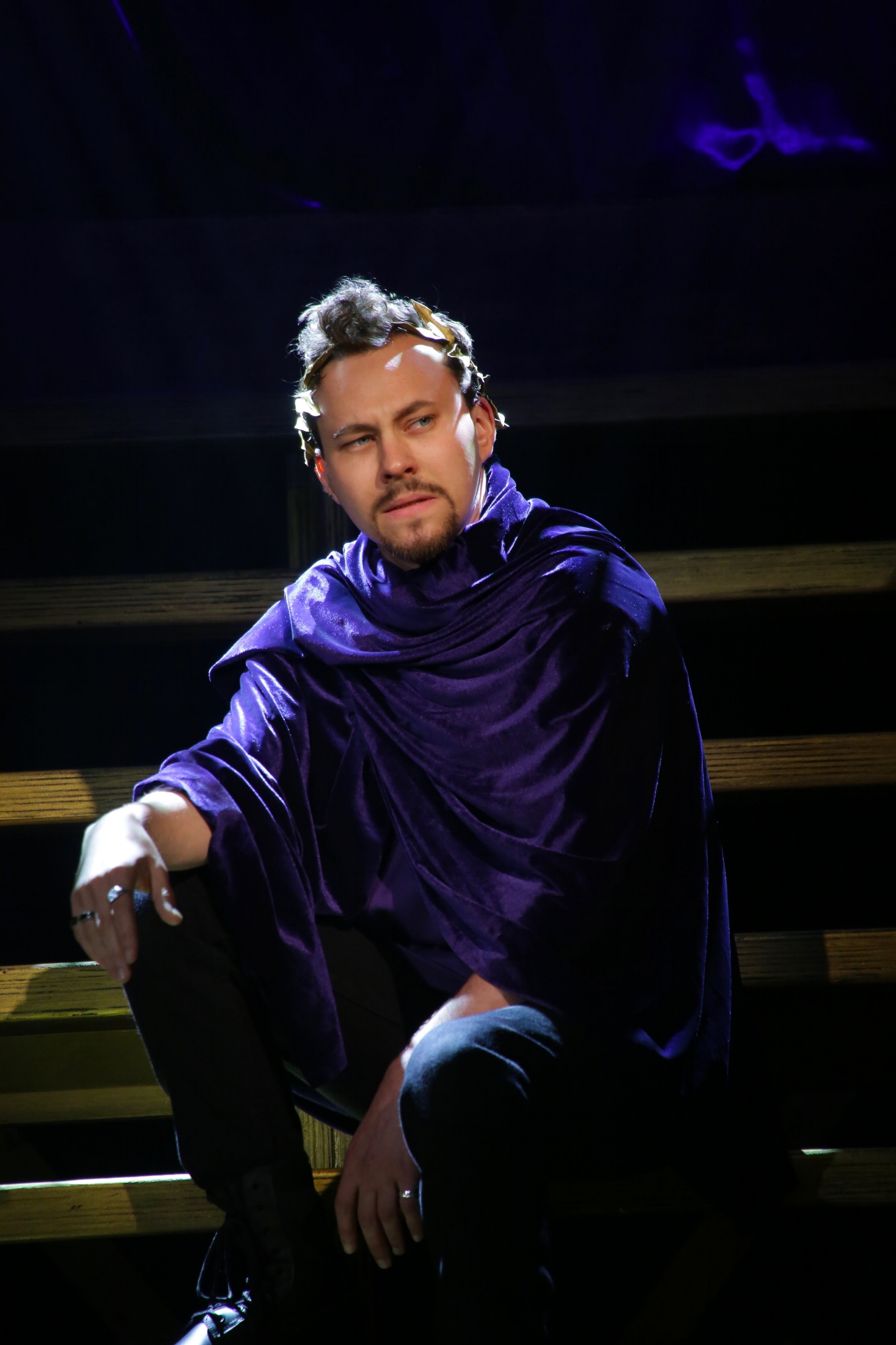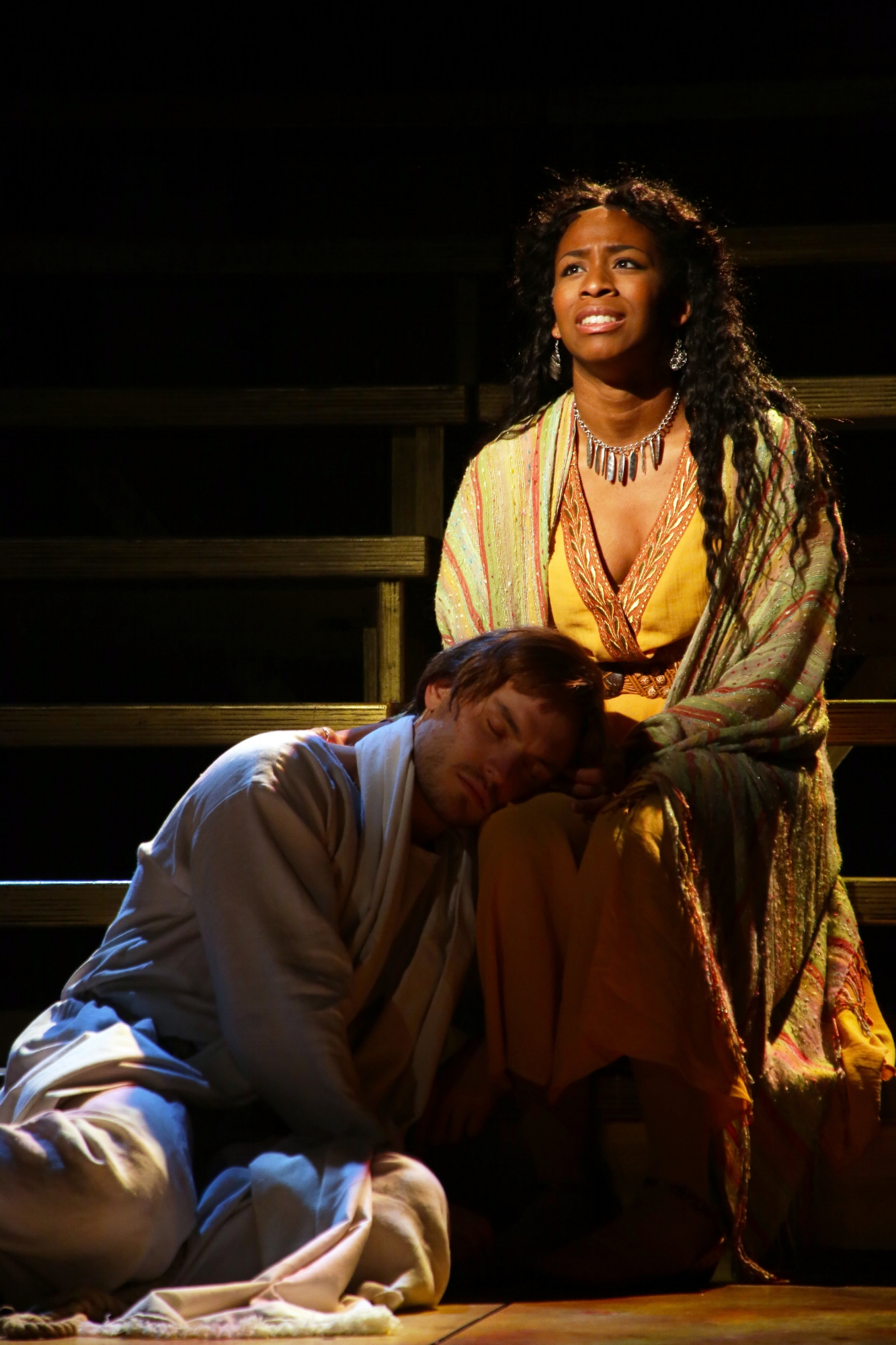Review of The River, TheaterWorks
Sigmund Freud called it “repetition compulsion,” the psychological condition of having to repeat a traumatic event. It may involve revisiting the place where the event occurred, or trying to recreate a situation through specific actions. A popular depiction of the condition can be seen in Alfred Hitchcock’s highly praised film Vertigo. That film might come to mind when watching Jez Butterworth’s fascinating and mysterious play The River, now playing at TheaterWorks, directed by Rob Ruggiero.
The setting—a fishing cabin “on the cliffs, above the river” in some out-of-the-way English dell—finds a suitable rustic charm in Brian Prather’s handsome set. It’s a homey place for The Man (Billy Carter) because he’s been coming there to fish for sea trout since he was a boy when his uncle was “the man” on the place. As the play opens we get one of those nice jolts that maintaining the fourth wall can still deliver. The Woman (Andrea Goss) is looking right out over the audience in TheaterWorks’ intimate space. She’s gazing raptly at a gorgeous sunset, and tries to entice The Man to share in the moment. “I’ve seen it,” he says, fussing with his gear for the big fishing trip, then proceeds to describe the sky with fulsome words, without looking, and creates a verbal painting.
The Woman (Andrea Goss), The Man (Billy Carter) in TheaterWorks’ production of The River
He’s got a knack for poeticizing, and at one point, trying to convince The Woman she needs to be a part of his fishing expedition, he asks her to read a Ted Hughes poem from a book. She, on the other hand, would rather stay in the cabin and read Virginia Woolf’s To the Lighthouse. At that point we might be afraid, indeed. “They’re going to the lighthouse, will they get there?,” she asks, half-facetiously. And then the pair go fishing, but what happens?
Butterworth, for all that he might be writing this play tongue-in-cheek, has taken on an interesting assignment: how to convey obsession, loss, hope, love, and the playfulness of seduction while maintaining the mystery of such experiences? All the while keeping the glory of fishing—and the nature of sea trout has its metaphoric application—before us as, well, what it’s like to try to catch something wild and fleeting.
The Man (Billy Carter), The Woman (Andrea Goss)
We might begin to think—after we meet The Other Woman—we’re in a Gothic story, a kind of Bluebeard-as-fishing-story that will reveal some awful truth about a serial killer. That would be a blunter version of what Butterworth offers. Instead, we’re contemplating something almost as off-putting: serial seduction, the strange-to-relate way that a search for true love—or an effort to recapture a previous moment—involves a set script. All we need to do is find the right actor for the part we’ve written in our heads.
That might sound like a very dark play, and in some ways it is. The brooding tone is leavened by the characters of the women. As The Woman, Andrea Goss is slyly mocking at times, apt to fear that The Man has plans more romantic than she’s prepared to accept. The Other Woman is played by Jasmine Batchelor as even more engaging, enough to make us think she may be “the One” after all. She brings a winning outlook to her match with The Man, even if she does catch a fish by a method forbidden in his code.
The Other Woman (Jasmine Batchelor), The Man (Billy Carter)
The Man could be a crashing bore, so set in his ways, but Billy Carter—in a role that Hugh Jackman played on Broadway—keeps us guessing about his motivations and where his heart really lies. He can be taciturn as well as rhapsodic. And he has to gut a fish on stage if only so we can watch him interact with his favorite species. He’s deliberate, almost devout. Later, he draws The Other Woman’s portrait with a similar concentration. The play asks us to see him as the women do: as someone who attracts interest but who also seems to hold others at bay, which only adds to his allure. His manliness may be the theme most at issue here, a studied self-sufficiency that requires a certain elusiveness in his prey, and his bride.
The Man (Billy Carter), and the fish
Every date between strangers is a kind of try out, we might suppose, but The River keeps an archly archetypal quality in play. A few oddities—like a scene about a bird getting into the cabin that plays the same for both women, each told “it’s happened before”—keep us guessing, waiting for a reveal that makes all the pieces fit. And fitting oneself to someone else is what successful romance is all about.
Director Rob Ruggiero keeps the tension palpable, and the sound effects in Frederick Kennedy’s sound design, including a subtly hypnotic song, add an eeriness. The River makes the most of the scenic quality of theater, so that each new scene, playing with our sense of how narrative unfolds, establishes a static moment without a clear relation to before and after. It’s “the still point of the turning world,” while it lasts.
The River
By Jez Butterworth
Directed by Rob Ruggiero
Set Design: Brian Prather; Costume Design: Tricia Barsamian; Lighting Design: John Lasiter; Sound Design: Frederick Kennedy; Associate Director: Taneisha Duggan; Production Manager: Bridget Sullivan; Stage Manager: Kate J. Cudworth; Dialect Coach: Johanna Morrison
Cast: Jasmine Batchelor, Billy Carter, Andrea Goss
TheaterWorks
October 4-November 11, 2018




